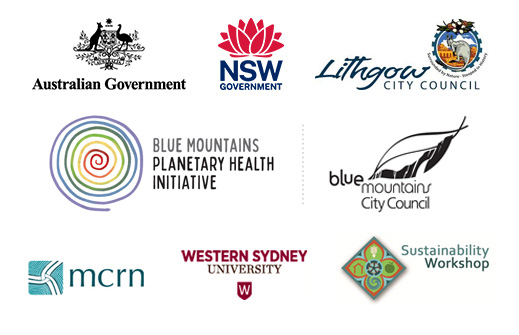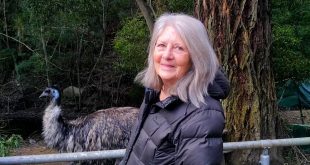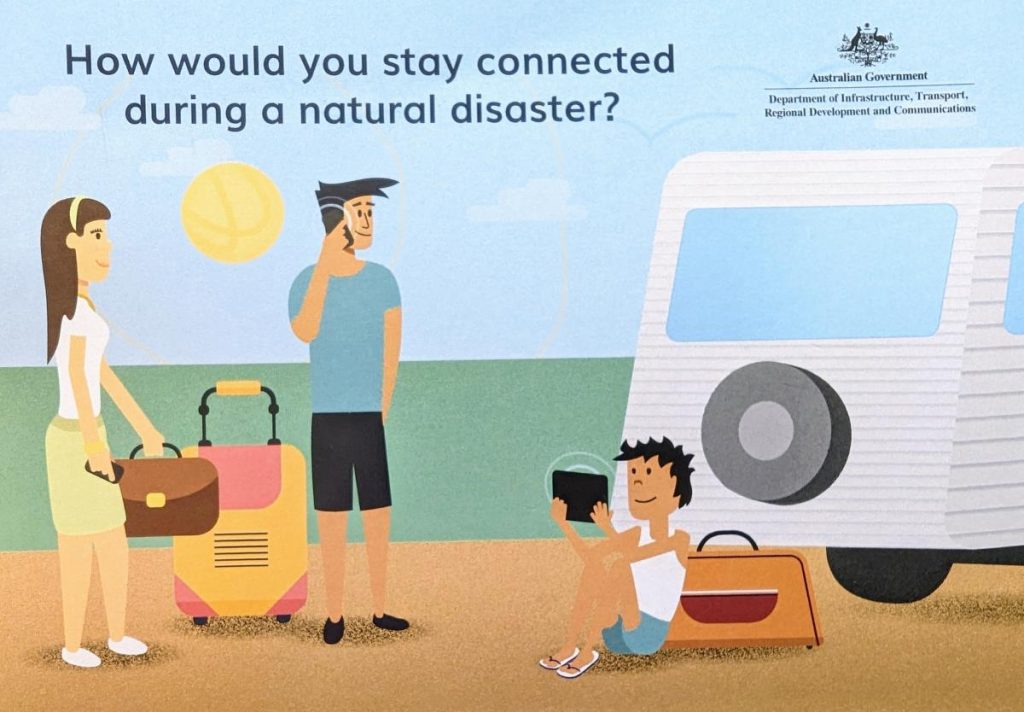
A postcard about the recent Capertee event
Story by Tracie McMahon
In the Black Summer of 2019/2020 many communities in regional and rural areas found out the hard way how vulnerable our communications systems are during disasters. The best way to mitigate this risk is to be prepared, as Lithgow Area residents found out at the recent Telecommunications Roadshow. Here’s what they learned.
The Telecommunications Roadshow began as a government response to the Black Summer Bushfires on the South Coast where holidaymakers and residents sheltered together on a beach as fire burned the surrounding areas. The comprehensive failure of everyday telecommunications services was a surprise to many as they queued for hours to make a phone call or send a text message.
Key Points:
- Telecommunications connectivity can be a matter of life and death during natural disasters
- Capertee Valley and surrounding areas have poor telecommunications infrastructure.
- Regional Tech Hub provides free independent support and advice for rural, regional and remote individuals, businesses and communities to assist with connectivity issues.
- There are many things individuals can do to be prepared now, before it is too late.
Representatives of Telstra, Optus, NBN (“the telcos”) and Regional Tech Hub were asked by the National Emergency Management Authority (NEMA) to provide locals with a face-to-face opportunity to discuss their concerns. The aim was to communicate the limitations of telecommunications infrastructure, advise the processes the telcos have in place for disasters and give locals an opportunity to raise other connectivity issues.
The roadshow was well received, introducing communities to the key contacts for their region and to Regional Tech Hub: an Australian Government Initiative run by the National Farmers Federation since 2020, that provides independent, free connectivity advice to anyone living or working in rural, regional or remote Australia.
In 2023 NEMA issued invitations to councils to participate in an expanded offering of the roadshows. Aware of local concerns, Lithgow City Council’s Community Resilience Officer, Greg Thurling, chose to hold an event in Capertee: an area known for poor coverage.
According to Irina Costa from NEMA, nine events were held in Lithgow, Oberon and the Blue Mountains, focusing mostly on areas with poor connectivity like Megalong Valley and Mount Tomah. The Capertee event drew an audience of 26 residents with many travelling from the nearby Kandos-Rylstone shire.
How do the telecommunications companies respond in a disaster?
Michael Marom, from Telstra’s Regional Australia team, explained they have a 3/3/3 strategy. They aim to restore the core network in 3 days. They then allow 3 weeks to restore services and 3 months to repair permanently. Matt Armstrong from NBN indicated they had a similar process, with several mobile communications containers available for immediate deployment. In all cases, decisions about emergency responses are made by NEMA in consultation with local emergency management committees. Telecommunications companies act on their instructions.
Both presenters reinforced personal awareness and the need to have a plan. There is no guarantee that problems will be fixed quickly. All actions are prioritised and unfortunately that means individual issues can be the last to be rectified. They stress that everyone should take the time to consider the technology they currently rely on and how it might be impacted in a disaster.
The following short Australian Government clip highlights the key considerations:
Sharing what they have learnt.
As they travelled the state, the presenters realised that many people had not realised, or had forgotten, how vulnerable technology can be.
We should remember no technology is 100% reliable, they all depend on power, and landlines can also be affected. SMS can become congested even when it is functional. We should not keep all our eggs in one system and we should have back-ups and back-up power supplies. – Michael Marom, Telstra Regional Australia team
He suggests that everyone have a ‘digital emergency kit’, which contains scanned copies of important documents secured in a cloud-based location. Many of us no longer have a list of important phone numbers as phones replace notebooks. We need to take the time to write these down, place the list in our evacuation kits, and where possible have a generator or back-up power source. Simple steps like this could provide enough time to get a message out in a disaster.
Reliability of local networks
As presenters relayed their messages, locals responded with questions about existing connections. Many indicated they only had a poor 3G connection or had to relay a signal from Wi-Fi. At present approximately 25% of Australia has mobile coverage. The 3G network is scheduled for shutdown in June 2024.
Residents were vocal in their concerns about the shutdown of the 3G network. Many indicated that 4G was not a viable option for them, as they were unable to connect to a signal. One resident’s explanation of his connections sounded like the game of ‘mousetrap’ where item upon item of equipment is connected to trap the elusive 3G signal. He felt 4G was impossible!
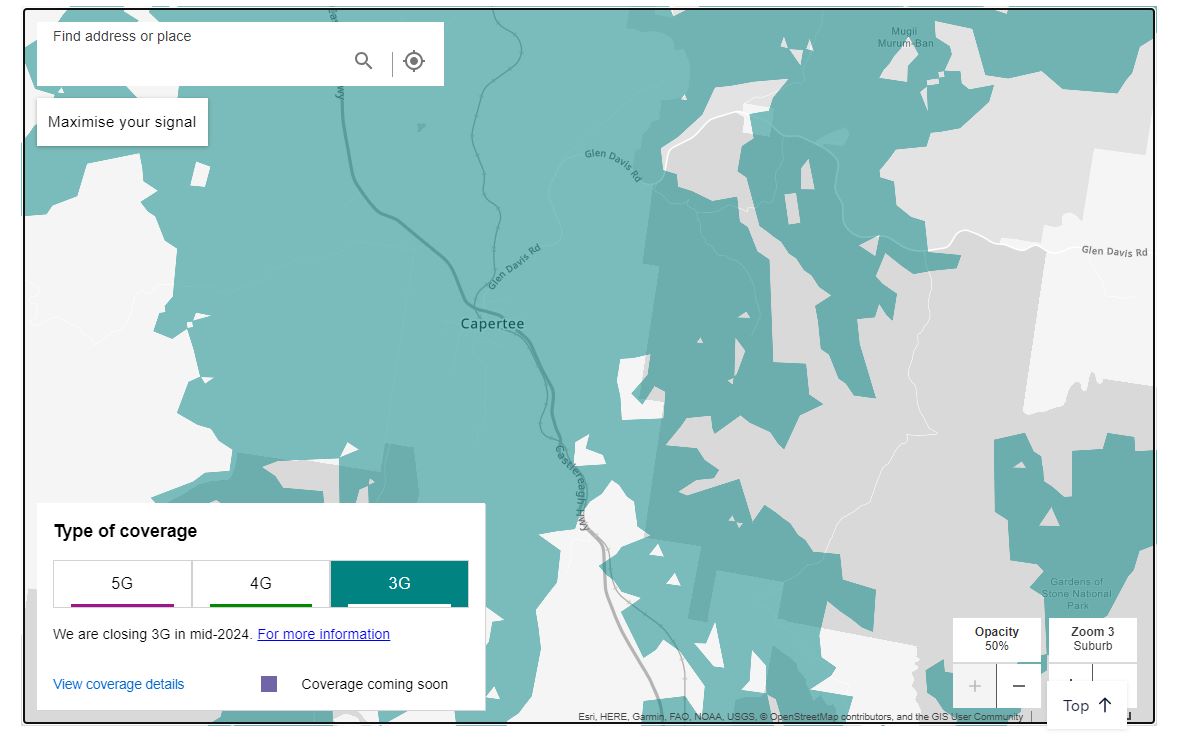
Telstra 3G coverage Map: source https://www.telstra.com.au/coverage-networks/our-coverage. Green is areas with 3G coverage, white has nil coverage and other areas have some overlapping coverage.
Michael Marom advised that they could not “switch it off” until the Government were satisfied that a “comparable coverage” was available to all users.
Residents asked, “What is a comparable coverage and how long have people got to test alternatives?” Michael advised that they are aware there are still many people using 3G phones and they have been in the process of contacting them directly, with mixed response. Also of concern are many Medi-Alert systems that will need to be upgraded to function.
Michael responded that people should act now and get in touch with Telstra or Regional Tech Hub, to ensure their needs are considered before it is “switched off.”
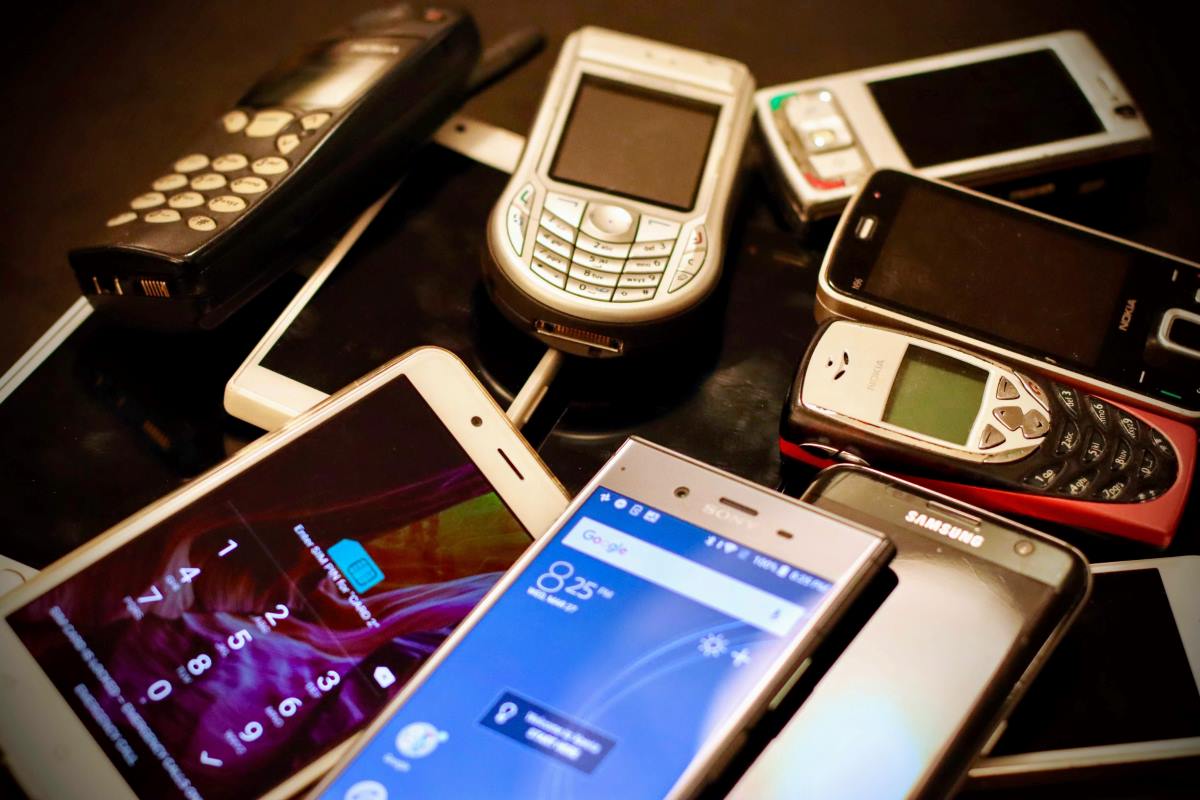
The 3G network will be turned off. Phones that cannot receive a 3G signal will no longer work. Photo by Eirik Solheim on Unsplash
In response, residents asked about the likelihood of having mobile phone towers installed to improve signals. Michael’s response quickly revealed a problem of the Lithgow LGA: topography. The steep walls of valleys like Capertee and Wolgan render a tower ineffective.
The current solution is a ‘small cell’ which provides reception for 300-500 metres from the tower, and for a limited number of users at any one time. In areas with high tourist numbers like the Capertee or Wolgan Valleys the network can be quickly overwhelmed. Kristie Kearney, a resident of Wolgan Valley, asked about progress on a planned small cell for the valley in 2024/25 and whether the cell will meet the needs of the community.
Michael indicated that decisions about which locations receive towers are made by governments. He advised that the best action communities could take is to lobby their elected representatives to ensure their issues remain front of mind.
What about internet issues?
The Australian Digital Inclusion Index (ADII) measures digital inclusion across three dimensions of access, affordability and digital ability based on an Australian Internet Usage Survey. In 2022, the Lithgow LGA had an ADII of 68.1, 5.1 points below the national average, and below all neighbouring LGAs.
Matt Armstrong, from NBN, reinforced that NBN is not a provider of internet services, but a provider of infrastructure, enabling connectivity. The quality of internet is dependent on the types of connections the data traverses to reach your home or business. In Lithgow, data travels between numerous towers starting in Dubbo. Anything that ‘takes out’ one of the towers, will take out the internet. In a significant natural disaster such as flood, fire or windstorm there could be complete loss of connectivity.
Satellite-based internet, such as SkyMuster and StarLink, and Fixed Wireless access technology are alternatives in rural areas. SkyMuster uses two High Earth Orbit satellites to both transmit and receive data from a premise while StarLink uses a network of Low Earth Orbit Satellites. Residents indicated some satellite options had noticeable lags, speed and data issues. The presenters responded that services are being upgraded frequently and residents who had disregarded the option before should reconsider satellite. Those with poor satellite connections should consider whether their existing equipment remains effective or a better solution is available.
Fixed Wireless access technology uses radio signals to connect a premise to an nbn fixed wireless tower. The effectiveness of this technology is dependent on line of sight of the premise, and is also subject to potential impacts of destruction of the tower.
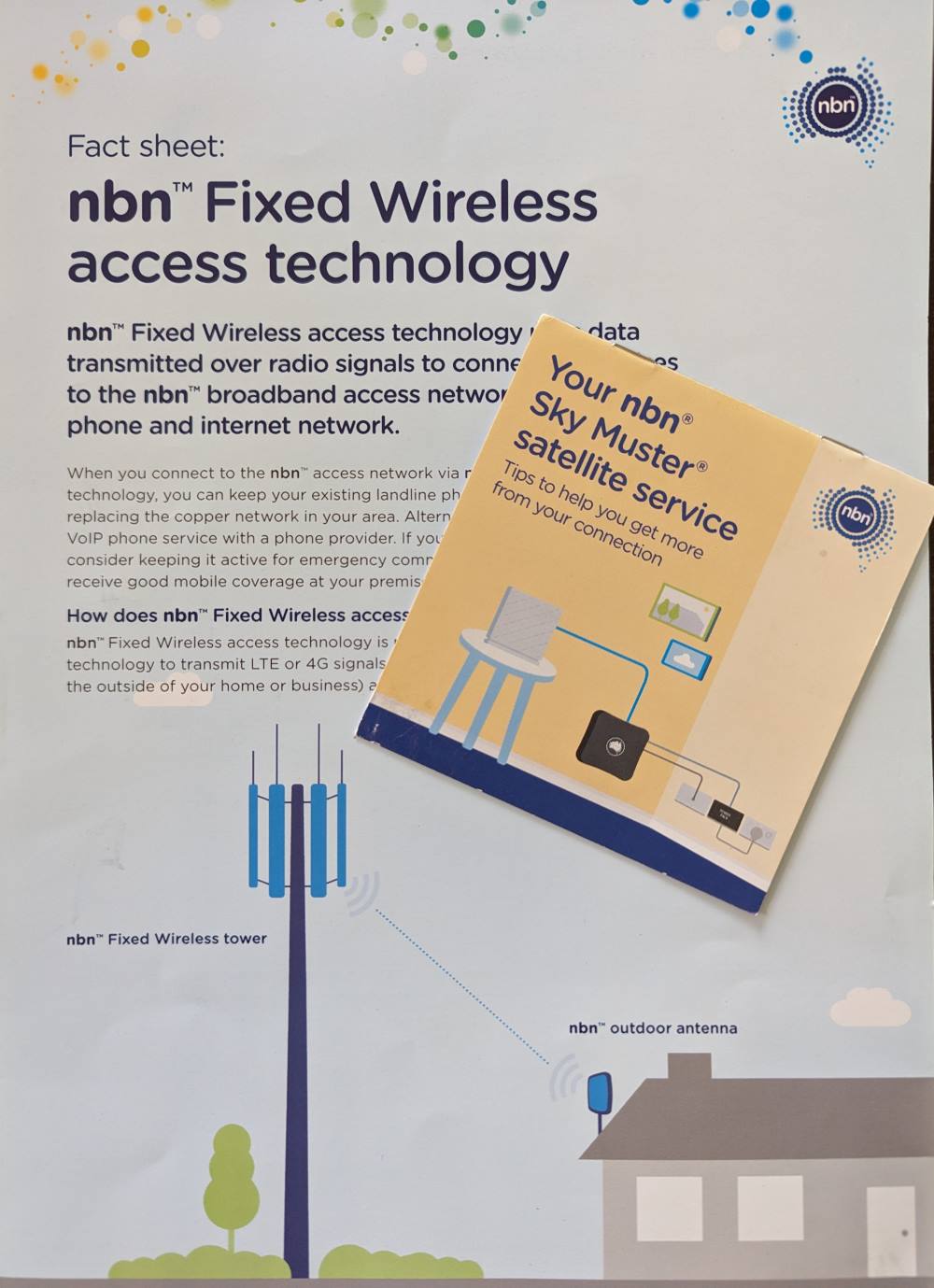
Alternate internet connection methods in rural and remote areas.
Getting help
Residents were clear that both mobile and internet connectivity were a significant concern for them, impacting travel, work, leisure and business operations including on-farm technology. Deborah McGrath, a resident of Cullen Bullen, explained that they have slow home connectivity, but feel more fortunate than others. Along the Castlereagh Highway there is a blackspot affecting residents, motorists and tourists. A resident of Bogee indicated the area has no transmitter and they are reliant on line-of-sight reception from Kandos, which varies according to terrain.
Regional Tech Hub – a free service for regional and rural areas
Trent Geddes from the Regional Tech Hub indicated this is where his organisation “fits”. The Regional Tech Hub emerged from a successful volunteer initiative in rural and remote areas to improve digital literacy and connectivity. The free service assists with connectivity problems, helping to navigate solutions based on individual circumstances. As regional and rural specialists, they understand the infrastructure operating in rural areas including mobile, landline, fixed wireless, satellite and ag-tech equipment needs.
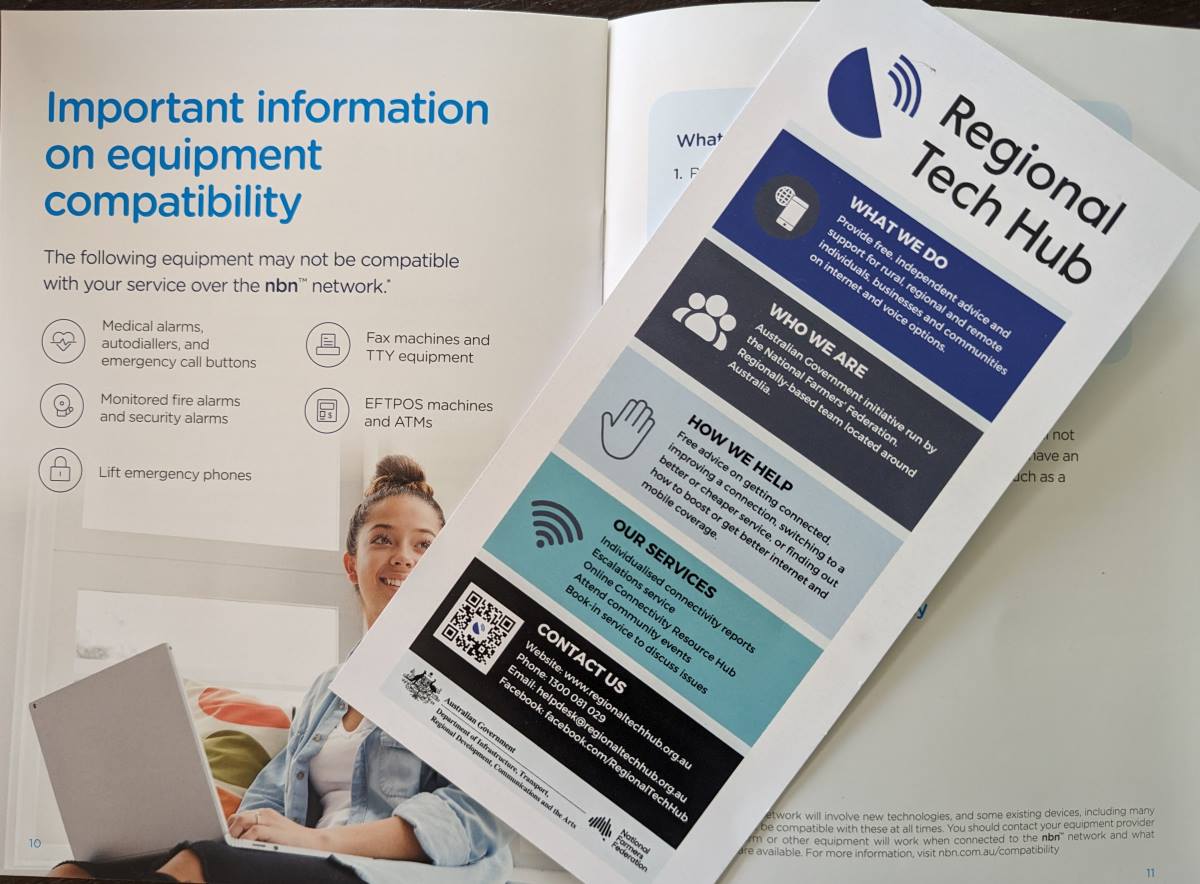
Helpful information for regional and rural communities from Regional Tech Hub
A follow up chat with Trent indicated that since 2020 they have logged over 3,500 cases. Two new cases were logged from residents attending the Capertee roadshow, with many more questions answered. Trent says there are common themes across all roadshows: coverage specific to devices and the most effective equipment for an area. Currently they have a lot of questions comparing StarLink to SkyMuster, but they are happy to answer all questions, including plan swaps ensuring connectivity is also cost-effective.
All presenters suggested spending time now navigating the best connectivity fit for your location and back-up options, so you are clear what you will be able to rely on in a disaster scenario. Trent says many attendees “have never been through the thought process of thinking about options. They just weren’t aware of what was out there.”
It seemed like good advice, and I took the opportunity to line up with the Capertee locals after the presentation and quiz the experts about my own ‘internet drop-out’ problems. My occasional glitches are a minor inconvenience compared to those I’ve heard about tonight, but I figured it would a good test of the roadshow. It took ten minutes to diagnose the problem and point me in the right direction. It always amazes me what can be achieved in small wooden halls in country towns.
Take Action:
- Make a list of all the technology you rely on and consider how it would function without power or in a different location. Develop a back-up plan to stay connected.
- Put together a digital emergency kit of important documents that are securely stored online or offsite.
- Have a paper list of emergency contacts so you always have access to important numbers.
- Check your mobile phone, Medi-Alert and other safety equipment. If it operates on the 3G network, upgrade to 4G so you remain connected and vital equipment works.
- Seek advice to explore options to get connected and stay connected. Regional Tech Hub can be contacted on 1300 081 029 or helpdesk@regionaltechhub.org.au.
Share this article:
This story has been produced as part of a Bioregional Collaboration for Planetary Health and is supported by the Disaster Risk Reduction Fund (DRRF). The DRRF is jointly funded by the Australian and New South Wales governments.
